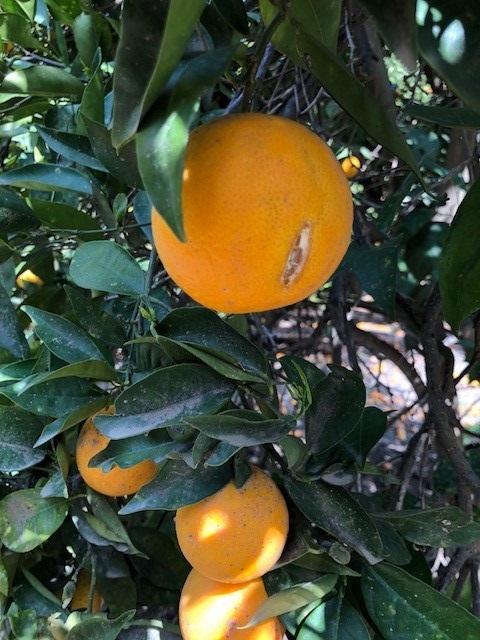Upcoming CAS/UC/CAC Seminar Addresses
Mulch,
Phytophthora and
Gibberellic Acid Use
The California Avocado Society will host the first of its 2019 California Avocado Growers Seminar Series with workshops focused on mulch and Phytophthora. Dr. Ben Faber, Dr. Tim Spann and Dr. Carol Lovatt will deliver presentations at the seminars.
Dr. Ben Faber, UC Cooperative Extension Soils/Water/Subtropical Crops Farm Advisor, will speak about the benefits of using mulch in avocado groves. Ben will discuss the various types of mulch that can be used, how and when to apply them and the benefits of using mulch in avocado groves.
Dr. Tim Spann, California Avocado Commission Research Program Director, will cover Phytophthora 101. Tim will discuss what phytophthora species affect avocados, how to recognize symptoms of phytophthora infection in avocados and best management practices for dealing with phytophthora.
Dr. Carol Lovatt, UC Riverside Emeritus Professor of Plant Physiology, will discuss the use of gibberellic acid (GA) plant growth regulator on avocados. A special local needs registration was obtained in early 2018 for use of GA on avocado in California. Carol will discuss the benefits of using GA, and when and how to apply it for those growers interested in trying this new tool.
The seminars will be held as follows:
Tuesday, February 5, 1:00 p.m. – 3:00 p.m.
SLO Farm Bureau, 4875 Morabito Place, San Luis Obispo, CA 93401
Wednesday, February 6, 9:00 a.m. – 11:00 a.m.
UC Cooperative Extension Office Auditorium, 669 County Square Drive, Ventura, CA 93003
Thursday, February 7, 12: 30 p.m. – 2:30 p.m.
Fallbrook Public Utility District Board Room, 990 East Mission Road, Fallbrook, CA 92028
And read more about Mulch Myths:
https://ucanr.edu/blogs/blogcore/postdetail.cfm?postnum=28917
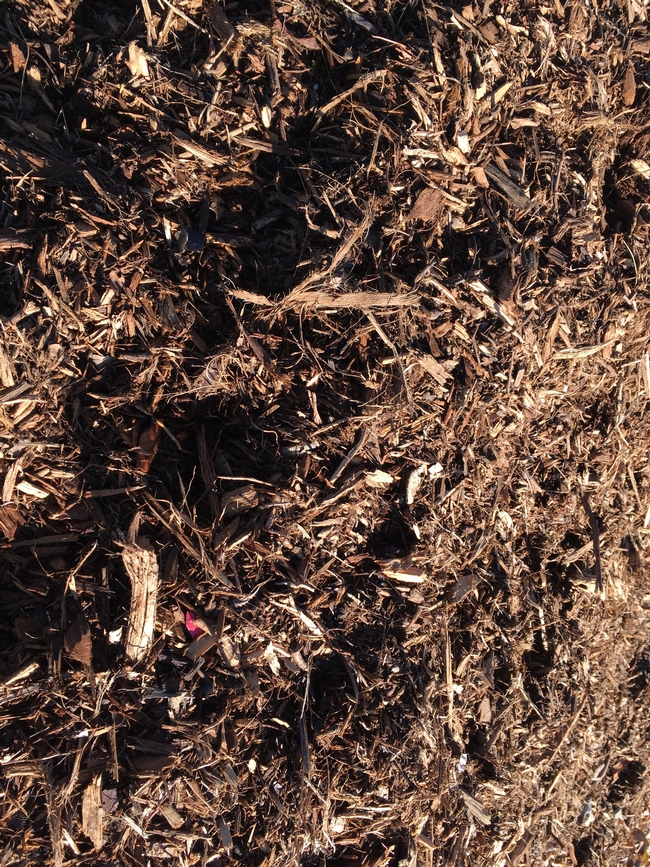
euc and a bit of scrap
Posted on
Friday, January 18, 2019 at
7:52 AM
So, there are peach trees right now that are flower-less and leaf-less. Wisteria which should have flowered in February is bare. The Royal apricot next door has no flower. The Lombardy poplars and birch in Oxnard don't have leaves. Spring is here, grass is growing, but many deciduous trees are still leafless and haven't flowered? What is going on?
Deciduous fruit trees and many landscape trees like poplar, birch, willow and sycamore, etc. must go through a dormant period each winter in preparation for producing fruit and leaves the following spring and summer. This rest period, also known as a chilling period, is directly related to winter temperatures. For many varieties of trees, the most efficient temperature for chilling is 45°F, with little additional chilling effect at temperatures below 32°F. Brief warm spells in winter have a negative effect — temperatures above 70°F for four or more hours offset any chilling that happened in the previous 24-36 hours.
Once chilling is complete, the trees prepare to wake up from dormancy and bud after a certain amount of warming takes place. The amount of required warming is cumulative, measured by counting the number of degrees each day above a threshold temperature, usually 40°F. This cumulative warming, combined with how well the tree met its chilling requirement over the winter, determines whether a tree buds early or late in the spring.
Tables and charts have been developed for different chilling requirements of fruit trees. The number of hours needed at or below 45°F varies with the type of tree:
- Peach: 400 to 1050 hours
- Apple: 800 to 1100 hours
- Cherry: 1000+ hours
But in coastal Southern California, those hours are never achieved. You need to go to Santa Ynez to get close to those hours. More typically in the Santa Paula, Santa Barbara, San Luis Obispo area, the chilling hours below 45 are close to 200 and lower in many years. Some years there is more, some years less. How temperatures above 70 affect chilling aren't always clear. As a result there are several different ways to account for chilling and none of them work very well for the coast./
Fortunately, we have low-chill varieties of many fruit trees that will produce with lower chilling. So ‘Anna' apple and ‘Royal' apricot do well, and many landscape trees are adapted to the lower winter chilling along the coast and do well. Low chill blueberries thrive to the point that in many years, they don't even go dormant.
This year the warm, cold, warm, cold pattern has mixed trees up. There are some deciduous trees that are doing fine, while others still have not flowered and leafed out. The mix of temperatures is not following the traditional patterns used to calculate chilling requirement. The trees are following their own pattern.
In the last several years in Southern California, winters have seemed shorter and milder, resulting in earlier springs. Trees that have flourished in a location could have decreasing yields in the future, and the favorable locations to grow these fruit trees could shift.
The Fruit and Nut Center at UC Davis has a link to the CIMIS system operated by the CA Dept of Water Resources. The site has various methods of calculating chilling hours, none of them seem adequate though for describing what is happening in the landscape today in Southern California
http://fruitsandnuts.ucdavis.edu/Weather_Services/chilling_accumulation_models/
Look at it to see if you can see a new way of understanding deciduous tree response to the weather.
Just got a call recently that 'Valencia' oranges are splitting. This normally happens to ripe 'Navels' that are over mature and get erratic winter irrigation, especially during drought. In this case, the 'Valencias' are advanced in maturity because of the warm winter, probably advanced by two months. Again erratic watering has probably lead to this splitting.
What a crazy winter.
Splitting coastal 'Valencia' oranges in April, 2018
photo: Peaches without adequate chilling.
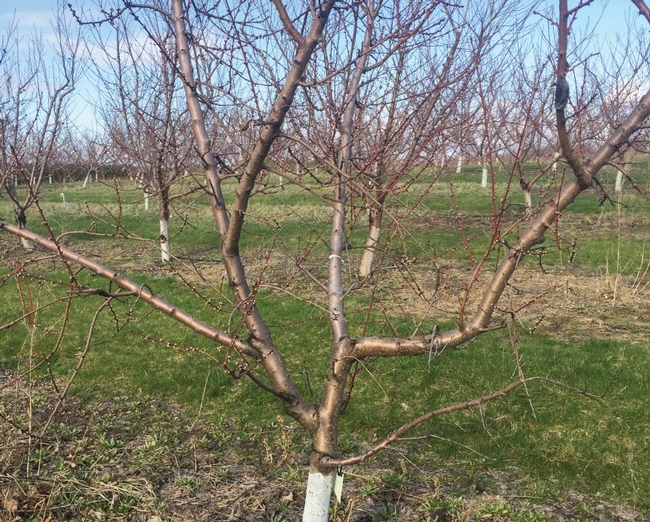
no chill peach
Posted on
Monday, April 16, 2018 at
6:43 AM
In 'pond scum,' scientists find answers to one of evolution's which-came-first cases
Moths and butterflies existed during Jurassic era, millions of years before flowering plants, team reports
This means insects were just waiting for avocados and citrus to come along in order to start using them as a resource.
Chestnut Hill, Mass. (1/10/2018) - Visiting a colleague in Germany in 2012, Boston College Research Professor Paul K. Strother was examining soil samples for pollen, spores, pieces of plants and insect legs - organic debris that might otherwise have been considered "pond scum" when it was trapped in sediment during cataclysmic earth events 200 million years ago.
The slides of rock samples drilled in the German countryside included some material that looked familiar to Strother, a Department of Earth and Environmental Sciences researcher at Boston College's Weston Observatory, who studies the origin and early evolution of land plants. What he saw were features similar to those found in insect wings.
The wrinkle was that these types of moths and butterflies - known as Lepidoptera - were long posited to have evolved 50 to 70 million years later, during the Cretaceous period when the first flowering plants emerged as their prime food source.
"The consensus has been that insects followed flowers," said Strother, a co-author of "A Triassic-Jurassic window into the evolution of Lepidoptera," a new report published today in Science Advances. "But that would be 50 million years later than what the wings were saying. It was odd to say the least, that there would be butterflies before there were flowers."
Five years later, Strother and colleagues from natural history museums in Germany and a university in the Netherlands have developed a scientific case showing the Lepidoptera evolved earlier than previously established - emerging during the Jurassic period.
Absent flowers, the researchers report, primitive moths and butterflies, known as the Glossata, developed the physical attributes - namely the sucking proboscis - to find nutrition by drawing off water droplets from the tips of immature gymnosperm seeds.
"What we've found is that these butterflies and moths with mouth parts were feeding on pollen droplets of gymnosperm seeds - from conifers related to pines, seed plants without fruits and flowers. They were feeding off the cone-borne seeds - mainly as a source of water," said Strother.
Even Charles Darwin called the mysterious evolution of flowering plants "an abominable mystery." Scientists have reckoned that flowering plants preceded the insects that fed off of them. But researchers have gradually started to piece together evidence that moths and butterflies existed earlier than the Cretaceous period, which began 145 million years ago.
The team's findings shed new light on the classic example of co-evolution: the evolutionary interplay between pollenating insects - flies, bees, wasps, butterflies and moths - and angiosperms, or flowers, Strother said.
"Our discovery does not change this, but instead, it demonstrates that the Glossata - which gave rise to the Lepidoptera - evolved earlier by a feeding adaptation to the gymnospermous ovules, or the pollen droplets," said Strother. "These insects later transferred their feeding preference onto angiosperms, and, as a result, ended up co-evolving with flowers where they function to transfer pollen as they feed on nectar."
Developing a clearer picture of insect evolution had proved elusive because much of what is learned from ancient rock, soil and fossils comes from earth once covered by oceans, said Strother. Moths and butterflies lived over land masses. In addition, their delicate features were prone to deterioration prior to fossilization.
Utrecht University paleontologist Bas van de Schootbrugge and colleagues assembled a portfolio of samples containing fossilized remains of moths and butterflies to carefully establish the presence of Lepidoptera in earth samples from a region where the cataclysmic transition between Triassic and Jurassic is preserved in rock.
The mass extinction event 201 million years ago wiped out an estimated 35 percent of all species, which makes the survival and diversification of Lepidoptera all the more remarkable.
Assembling the evidence required a team that included Strother and van de Schootbrugee, Utrecht University's Timo van Eldijk, an undergraduate at the time, Carolien Weijst, and Henk Visscher; as well as Torsten Wappler of the German natural history museum Hessisches Landesmuseum Darmstadt, and Hossein Rajaei of Museum fur Naturkunde, in Stuttgart.
In 2012, Strother was examining the sample slides looking at algae, fungi and soil microorganisms. "These are organic extractions after you've dissolved away the minerals in the samples and you're looking at anything that is organic. There are pollen and spores. There are other things. Pieces of plant cuticles. Resistant organic material. Insect legs. Ninety-nine percent is plant debris.
"It's basically pond scum," said Strother, referring to the film of debris that can sit atop a pool of standing water. Part of what Strother saw looked similar to insects from another era, he said.
The project required linking a range of evidence, akin to a scientific detective story, said Strother.
"This is the old-fashioned science of discovery," said Strother. "We're looking at this microscopic world of things that lived hundreds of millions of years ago and we don't know what they are. The challenge is: can we figure out what they are? Part of it is piecing together the tree of life, or the evolution of organisms through time. It is more like a puzzle or a mystery."
https://www.eurekalert.org/pub_releases/2018-01/bc-is011018.php
IMAGE: Examples of the oldest wing and body scales of primitive moths from the Schandelah-1 core photographed with transmitted light (magnification 630x). The scales are part of palynological preparations and occur... view more
Credit: Bas van de Schootbrugge, Utrecht University
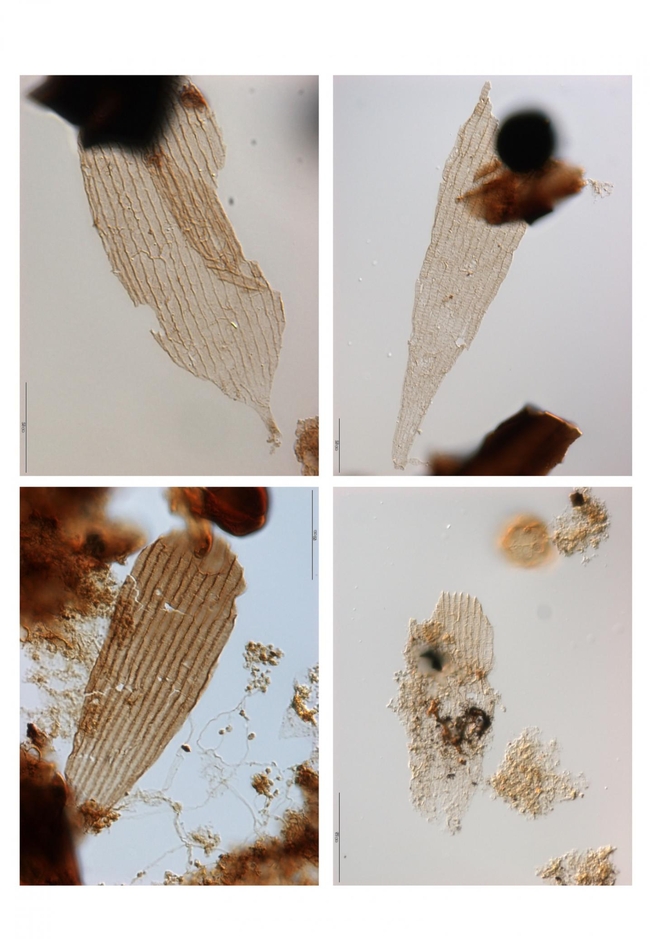
oldest insect wings
Posted on
Monday, February 12, 2018 at
6:34 AM
| |
Adapted from
"The Remarkable Avocado Flower"
By Dr. B. O. Bergh
|
|
|
|
Introduction
The avocado (Persea americana Mill.) flower behavior is noteworthy in that there is nothing quite like it known in any other plant. The flower has both female and male organs, but they don't function at the same time. Each flower is female when it first opens. That is, its stigma will receive pollen from other avocado flowers, but its stamens (male organs) do not shed pollen at this first opening.
The petals and sepals, which look alike in the avocado, protect the delicate sex organs while they develop. The nectaries and staminodes secrete nectar that attracts bees. To obtain an avocado fruit, a bee (or other flying insect) must transfer pollen from a different flower to the stigma of this first-opening flower. Sperm from the pollen grow down under the slender style to fertilize the female egg inside the ovary, which then grows into the mature fruit. |
|
The unique avocado flower
The first or female stage remains open for only 2 or 3 hours. The flower then closes and remains closed the rest of the day and that night. The following day it opens again. But now the stigma will no longer receive pollen. Instead, the flower is now shedding pollen. That is, each flower is female at its first opening, male at its second. After being open several hours the second day, the flower closes again, this time for good. If it had been successfully pollinated at the first opening, and if other conditions are right, it will develop into a delicious fruit. |
|
|
|
|
 |
|
|
Click for large view
|
|
"A" and "B" type flowers
Nature has provided for avocado cross-pollination by creating varieties of two kinds. The "A" type is female in the morning of the first day and male in the afternoon of the second day (when the weather is warm). The "B" type is just the reverse: its flowers are female in the afternoon and male the following morning. For one flower of each variety, the timing will be as follows: |
|
| |
| |
First Day
|
Second Day
|
|
Flower Type
|
Morning
|
Afternoon
|
Morning
|
Afternoon
|
|
"A" Type
|
Female
|
|
|
Male
|
|
"B" Type
|
|
Female
|
Male
|
|
|
|
|
| But with hundreds of flowers opening in both stages day after day, the daily situation appears like this: |
|
| |
|
Flower Type
|
Morning
|
Afternoon
|
|
"A" Type
|
Female
|
Male
|
|
"B" Type
|
Male
|
Female
|
|
|
|
|
Flower opening and temperature
The two flowering types behave with clock-like exactness only when the average temperature (night minimum and day maximum) is above 70 degrees F (21.1 C). As temperatures fall, the daily openings become delayed and become irregular, so that a single tree may have flowers in both female and male stages at the same time. This helps to explain how large blocks of just one variety sometimes set heavy crops.
But, as the average temperature falls below about 70 F, the flower parts function less well. Below about 60 F (15.5 C), there may be zero set.
Check out Ken Melman's flower video
https://vimeo.com/7267944
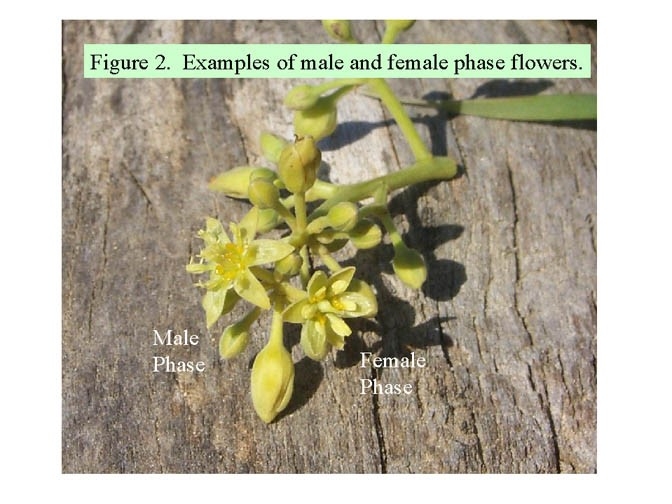
|
|
| |
|
|
|
|
|
|
|
|
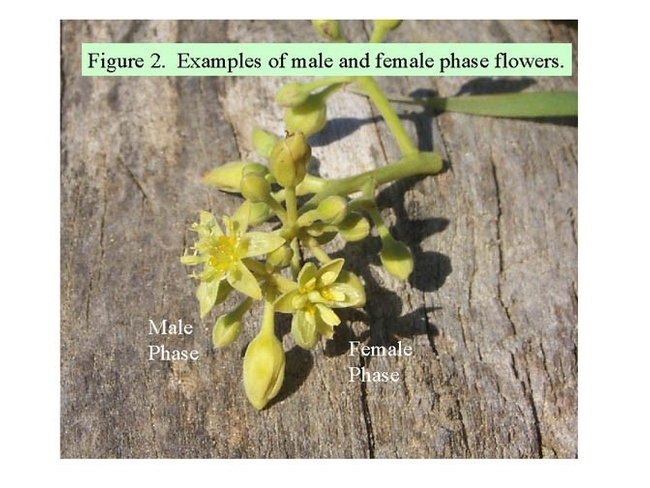
avocado flowers
Posted on
Thursday, April 13, 2017 at
12:55 PM
This is a sad time to be an avocado. Winter's gone and temperatures are just ripe for flowering and the trees are going bust. So much so, that those sad leaves that have accumulated salts over the last year are being dropped and only flowers might be seen, especially on young trees. This is time for a little shot of nitrogen to encourage some new vegetative growth. Not a bunch, but a nudge. Several pounds per acre, something less than 10-15 pounds of N for a mature orchard and even less for a new orchard.
A commonly held belief is that if you apply nitrogen at the wrong time, it will push resources into vegetative growth at the expense of flower and fruit. This is somewhat true for annual plants that get most of their nutrients from outside sources (soil, air, fertilizer, water), but trees have a huge buffer in their storage organs (roots, stems, leaves, etc.). Most growth in trees occurs from this storage source and most importantly from photosynthesis and the sun. The more sun captured the more energy for flowering and fruit production.
So it is this competition for photosynthates that becomes the most limiting factor. When there is not enough to go around, the tree sheds fruit. If you see fruit dropping off a tree after applying a slug of fertilizer, it's a salt effect. Too much salt and it causes a water competition and the tree is stressed. It's not the nitrogen, but too much salt. With fertigation this is not so likely to happen as when dry fertilizers were applied and someone got too aggressive with the application
In fact a dose of nitrogen fertilizer is a good idea at this time when there are lots of flowers. This can encourage a flush of leaves that will protect the fruit that does set from sunburn and damage that would cause fruit to drop. A bit of nitrogen to encourage leaf replacement is a good approach to dealing with persea mite damage that occurred the previous season.
For further reading about the competition between vegetative and reproductive growth as affected by nitrogen (or little affected in fruit trees by nitrogen), D.O. Huett wrote a wonderful review of past research on this topic:
http://www.publish.csiro.au/?act=view_file&file_id=AR9960047.pdf
Also, if the trees have really defoliated, it might be time to do some whitewashing, south and west sides of branches, to prevent sunburn.
Images:
Avocado defoliated and ones in a balanced bloom

avocado defoliated

avocados in bloom
Posted on
Monday, March 28, 2016 at
6:32 AM



